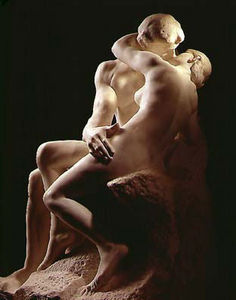LEFT TO TELL (IMMACULLE ILIBGIZA)
In
1994, the genocide that happened in Rwanda had slaughtered more than a million
people of Tutsi ethnicity. Fortunately, there were a lot of people who escaped
and survived to tell the story about the terrors. Immaculee Ilibgiza was one of
the blessed women that survived the genocide. She wrote Left to Tell to depict the true story about her life when the
massacres happened. She and seven other women were offered a bathroom that was
four feet long and three feet wide by Pastor Murinzi which had hidden them from
the extremists for nearly three months. The autobiography of Immaculee
describes the terrors that these women had to experience. Moreover, it was also
about the discovering of God’s power in Immaculee’s life. Left to Tell is an outstanding book that has powerful stories.
There are two chapters in particular that are impactful. One chapter
illustrates the importance of family and the other demonstrates the power of
forgiveness.
Before
the genocide happened, Rwanda’s population was seven million that contained
three ethnic groups: Hutu, Tutsi and Twa. Hutu’s population was approximately
85%, while Tutsi’s population was only 14% and Twa was 1%. In the 1990s, the
extremists of Hutu blamed the previous, oppressive Tutsi regime for the
increasing of social, economic and political problems. As the result, when the
Hutu gained power, they created propaganda of fear and hatred toward the Tutsi.
Left to Tell
by Immaculee Ilibagiza was a magnificent book that illustrated the terrors that
all the Tutsi had experienced. The
feeling of losing hope, family and being hunted by the extremists had brought
the readers into a world of sympathy and terror toward what had happened. The
readers could feel the pain of Immaculee when she had to force her little
brother Vianney and his friend Augustine out of the Pastor’s house and went
into the chaos. “I worried that if
Vianney left, I might never see anyone in my family again” (Immaculee, 68).
Immaculee could predict that if she let her brother go, it would be that last
time she saw her family member. She had the fear of being the last survivor of
her family. That moment was heartbreaking for a lot of readers. It evoked the
feeling of sympathy and reminded people about their family. Due to the fact
that humans cannot predict the future, they cannot know what may happen to
their family at any time. Chapter “Farewell to the boys” in Left to Tell by Immaculee does not only
express her emotion toward her brother but also reminds people about the value
of family, which could be lost at any time.
After
the genocide, the hardest thing for the Tutsi was to learn how to forgive the
Hutu, those who had murdered and slaughtered Tutsi families. However, Immaculee
was successful in learning how to forgive those who had slaughtered her family.
“Felicien had hunted me….Felicien was
sobbing. I could feel his shame. He looked up at me for only a moment, but our
eyes met. I reached out, touched his hand lightly, and quietly said what I’d
come to say: “I forgive you”” (Immaculee, 204). That would be the hardest
thing to say toward a murderer, especially the one who used to hunt and kill
Tutsi families. However, Immaculee did it. She believed in God and his power of
forgiveness. She found the peace in her soul by not seeking for revenge but
forgiveness. Chapter “Forgiving the
living” reminds people about the power of forgiveness in life. In fact, humans
do not easily forgive each other’s faults. They cannot let go the anger they
hold in their heart.
In
essence, Left to Tell by Immaculee
Ilibagiza is an outstanding book that is not only depicted the terror of Rwanda
genocide, but also remind the readers about the sympathy and the God’s power. Immaculee
prayed to God almost 24 hours a day during the time she hide in the bathroom.
She proved to the readers that as long as you believe and pray to God, he would
response. The Immaculee’s story has impacted on more than million people in the
world, including me.
Her
stories have many meanings about life that humans need to learn. For instance, the
chapter “Farewell to the boys” shows the importance of family that humans could
lose at any time. Furthermore, the power of forgiveness in life is immeasurably
valuable. It helps humans put down the sorrows that others create and brings
peace to all.







